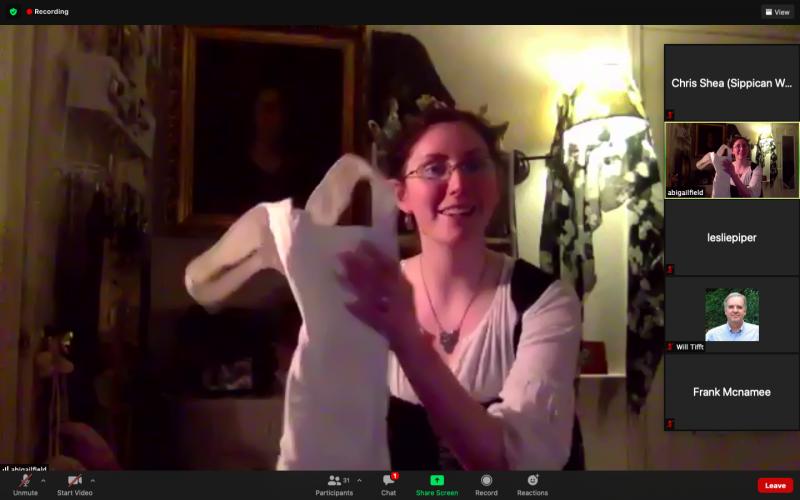Life during wartime: Sippican Historical Society hosts talk on WWI fashion
MARION — A big misconception about early 1900s women’s fashion that has always bothered Abigail Field, a UMass Dartmouth history graduate and Marion Antiques employee, is that corsets were uncomfortable and had boning inside of them.
Even in the early 1800s, Field said, that was not the case.
“I have an original corset from the period — I can literally roll it up,” she noted. “This is very comfortable, in fact, I would wager it’s a lot more comfortable than bras are today.”
That was one of many fashion facts the young textile expert brought up during a virtual presentation on women’s clothing during World War I hosted by the Sippican Historical Society on Jan. 21.
Prior to the Great War, Field said, women’s clothing involved “a crazy amount of layers.”
According to the historian, the average woman during the Belle Époque would wear stockings, garters, shift dress, corset or girdle (with cover), petticoat, followed by a skirt and blouse (or dress) with a belt.
Those wanting to accessorize might add a coat or hat. Stylistically, designers favored lace, ruffles and frills.
Once the war broke out in Europe in 1914, the men set out for the trenches and women found themselves taking on work at hospitals or in munitions factories.
“You can’t wear super long skirts and seven layers to the factory or as a nurse,” Field said, adding that informal rationing was also a big factor in the stylistic shift.
Gone were the frills of the past. Now clothing took on more of a “militaristic fashion,” with more buttons, pleats, and pockets — along with darker colors being more prevalent.
The most popular material, Field added — especially in western nations like the United States — was cotton. She noted that during that period, wearing cotton clothing was seen as a form of patriotism.
“People were so focused on supporting their troops,” she said, adding that another reason for cotton’s perceived patriotism was because the U.S. produced a lot of cotton clothing during the 1910s.
After the war ended with the armistice in 1918, the historian noted that women weren’t too eager to return to petticoats and wanted to continue wearing shorter skirts and dresses — eventually ushering in the Flapper styles that would become associated with the 1920s.
“World War I is very interesting,” Field said. “It’s only like a four year period — but it totally changed how people dressed.”















